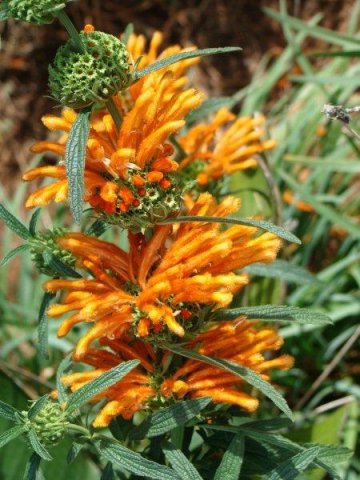Leonotis leonurus

Author: Ivan Lätti
Photographer: Ricky Mauer
Leonotis leonurus is an erect, perennial shrub in the Lamiaceae family. It branches much and grows strongly to 2,5 m.
The disc-like whorls of orange, tubular flowers, spaced up the many erect stems, have made the plant popular with gardeners. One common name for it, narrow-leaved minaret flower, aptly describes the striking whorls of flowers.
The species is distributed widely across the south, east and northeast of South Africa. It is found in the Western Cape, the Eastern Cape, KwaZulu-Natal, Mpumalanga and Limpopo, absent from the northwest and centre of the country, while also growing in some neighbouring states.
The habitat is forest margins and some grasslands. The species is not considered to be threatened in its habitat early in the twenty first century.
The long flowering season, lasting most of the year apart from the beginning of spring, has helped to maintain or even enhance the plants popularity. The ease of growing L. leonurus has ensured its introduction in many parts of the gardening world.
A variety of traditional medicinal uses, including the treatment of fevers, snakebite, headaches and dysentery have been recorded.
And then there are the induced mind states achieved from smoking the leaves of certain plants! Whoever the practical joker was that burdened Leonotis with the wild dagga name may have added misplaced admiration for the plant.
Mind states are known to be caused by words, including misleading ones. Dagga is the Afrikaans name for Cannabis, but Leonotis is not narcotic. Some will continue smoking it, although smoking their socks would be about the same (Vlok and Schutte-Vlok, 2015; Manning, 2009; Wikipedia; http://redlist.sanbi.org).

